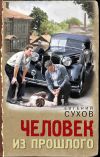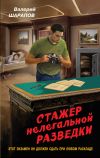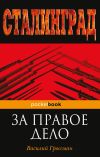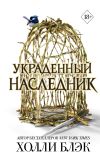Текст книги "The Great Boer War"

Автор книги: Arthur Conan Doyle
Жанр: Зарубежная публицистика, Публицистика
Возрастные ограничения: +12
сообщить о неприемлемом содержимом
Текущая страница: 19 (всего у книги 43 страниц)
In order to strike unexpectedly, Lord Roberts had not only made a strong demonstration at Koodoosdrift, at the other end of the Boer line, but he had withdrawn his main force some forty miles south, taking them down by rail to Belmont and Enslin with such secrecy that even commanding officers had no idea whither the troops were going. The cavalry which had come from French's command at Colesberg had already reached the rendezvous, travelling by road to Naauwpoort, and thence by train. This force consisted of the Carabineers, New South Wales Lancers, Inniskillings, composite regiment of Household Cavalry, 10th Hussars, with some mounted infantry and two batteries of Horse Artillery, making a force of nearly three thousand sabres. To this were added the 9th and 12th Lancers from Modder River, the 16th Lancers from India, the Scots Greys, which had been patrolling Orange River from the beginning of the war, Rimington's Scouts, and two brigades of mounted infantry under Colonels Ridley and Hannay. The force under this latter officer had a severe skirmish on its way to the rendezvous and lost fifty or sixty in killed, wounded, and missing. Five other batteries of Horse Artillery were added to the force, making seven in all, with a pontoon section of Royal Engineers. The total number of men was about five thousand. By the night of Sunday, February 11th, this formidable force had concentrated at Ramdam, twenty miles north-east of Belmont, and was ready to advance. At two in the morning of Monday, February 12th, the start was made, and the long sinuous line of night-riders moved off over the shadowy veld, the beat of twenty thousand hoofs, the clank of steel, and the rumble of gunwheels and tumbrils swelling into a deep low roar like the surge upon the shingle.
Two rivers, the Riet and the Modder, intervened between French and Kimberley. By daylight on the 12th the head of his force had reached Waterval Drift, which was found to be defended by a body of Boers with a gun. Leaving a small detachment to hold them, French passed his men over Dekiel's Drift, higher up the stream, and swept the enemy out of his position. This considerable force of Boers had come from Jacobsdal, and were just too late to get into position to resist the crossing. Had we been ten minutes later, the matter would have been much more serious. At the cost of a very small loss he held both sides of the ford, but it was not until midnight that the whole long column was brought across, and bivouacked upon the northern bank. In the morning the strength of the force was enormously increased by the arrival of one more horseman. It was Roberts himself, who had ridden over to give the men a send-off, and the sight of his wiry erect figure and mahogany face sent them full of fire and confidence upon their way.
But the march of this second day (February 13th) was a military operation of some difficulty. Thirty long waterless miles had to be done before they could reach the Modder, and it was possible that even then they might have to fight an action before winning the drift. The weather was very hot, and through the long day the sun beat down from an unclouded sky, while the soldiers were only shaded by the dust-bank in which they rode. A broad arid plain, swelling into stony hills, surrounded them on every side. Here and there in the extreme distance, mounted figures moved over the vast expanse – Boer scouts who marked in amazement the advance of this great array. Once or twice these men gathered together, and a sputter of rifle fire broke out upon our left flank, but the great tide swept on and carried them with it. Often in this desolate land the herds of mottled springbok and of grey rekbok could be seen sweeping over the plain, or stopping with that curiosity upon which the hunter trades, to stare at the unwonted spectacle.
So all day they rode, hussars, dragoons, and lancers, over the withered veld, until men and horses drooped with the heat and the exertion. A front of nearly two miles was kept, the regiments moving two abreast in open order; and the sight of this magnificent cloud of horsemen sweeping over the great barren plain was a glorious one. The veld had caught fire upon the right, and a black cloud of smoke with a lurid heart to it covered the flank. The beat of the sun from above and the swelter of dust from below were overpowering. Gun horses fell in the traces and died of pure exhaustion. The men, parched and silent, but cheerful, strained their eyes to pierce the continual mirage which played over the horizon, and to catch the first glimpse of the Modder. At last, as the sun began to slope down to the west, a thin line of green was discerned, the bushes which skirt the banks of that ill-favoured stream. With renewed heart the cavalry pushed on and made for the drift, while Major Rimington, to whom the onerous duty of guiding the force had been entrusted, gave a sigh of relief as he saw that he had indeed struck the very point at which he had aimed.
The essential thing in the movements had been speed – to reach each point before the enemy could concentrate to oppose them. Upon this it depended whether they would find five hundred or five thousand waiting on the further bank. It must have been with anxious eyes that French watched his first regiment ride down to Klip Drift. If the Boers should have had notice of his coming and have transferred some of their 40-pounders, he might lose heavily before he forced the stream. But this time, at last, he had completely outmanoeuvred them. He came with the news of his coming, and Broadwood with the 12th Lancers rushed the drift. The small Boer force saved itself by flight, and the camp, the wagons, and the supplies remained with the victors. On the night of the 13th he had secured the passage of the Modder, and up to the early morning the horses and the guns were splashing through its coffee-coloured waters.
French's force had now come level to the main position of the Boers, but had struck it upon the extreme left wing. The extreme right wing, thanks to the Koodoosdrift demonstration, was fifty miles off, and this line was naturally very thinly held, save only at the central position of Magersfontein. Cronje could not denude this central position, for he saw Methuen still waiting in front of him, and in any case Klip Drift is twenty-five miles from Magersfontein. But the Boer left wing, though scattered, gathered into some sort of cohesion on Wednesday (February 14th), and made an effort to check the victorious progress of the cavalry. It was necessary on this day to rest at Klip Drift, until Kelly-Kenny should come up with the infantry to hold what had been gained. All day the small bodies of Boers came riding in and taking up positions between the column and its objective.
Next morning the advance was resumed, the column being still forty miles from Kimberley with the enemy in unknown force between. Some four miles out French came upon their position, two hills with a long low nek between, from which came a brisk rifle fire supported by artillery. But French was not only not to be stopped, but could not even be retarded. Disregarding the Boer fire completely the cavalry swept in wave after wave over the low nek, and so round the base of the hills. The Boer riflemen upon the kopjes must have seen a magnificent military spectacle as regiment after regiment, the 9th Lancers leading, all in very open order, swept across the plain at a gallop, and so passed over the nek. A few score horses and half as many men were left behind them, but forty or fifty Boers were cut down in the pursuit. It appears to have been one of the very few occasions during the campaign when that obsolete and absurd weapon the sword was anything but a dead weight to its bearer.
And now the force had a straight run in before it, for it had outpaced any further force of Boers which may have been advancing from the direction of Magersfontein. The horses, which had come a hundred miles in four days with insufficient food and water, were so done that it was no uncommon sight to see the trooper not only walking to ease his horse, but carrying part of his monstrous weight of saddle gear. But in spite of fatigue the force pressed on until in the afternoon a distant view was seen, across the reddish plain, of the brick houses and corrugated roofs of Kimberley. The Boer besiegers cleared off in front of it, and that night (February 15th) the relieving column camped on the plain two miles away, while French and his staff rode in to the rescued city.
The war was a cruel one for the cavalry, who were handicapped throughout by the nature of the country and by the tactics of the enemy. They are certainly the branch of the service which had least opportunity for distinction. The work of scouting and patrolling is the most dangerous which a soldier can undertake, and yet from its very nature it can find no chronicler. The war correspondent, like Providence, is always with the big battalions, and there never was a campaign in which there was more unrecorded heroism, the heroism of the picket and of the vedette which finds its way into no newspaper paragraph. But in the larger operations of the war it is difficult to say that cavalry, as cavalry, have justified their existence. In the opinion of many the tendency of the future will be to convert the whole force into mounted infantry. How little is required to turn our troopers into excellent foot soldiers was shown at Magersfontein, where the 12th Lancers, dismounted by the command of their colonel, Lord Airlie, held back the threatened flank attack all the morning. A little training in taking cover, leggings instead of boots, and a rifle instead of a carbine would give us a formidable force of twenty thousand men who could do all that our cavalry does, and a great deal more besides. It is undoubtedly possible on many occasions in this war, at Colesberg, at Diamond Hill, to say 'Here our cavalry did well.' They are brave men on good horses, and they may be expected to do well. But the champion of the cavalry cause must point out the occasions where the cavalry did something which could not have been done by the same number of equally brave and equally well-mounted infantry. Only then will the existence of the cavalry be justified. The lesson both of the South African and of the American civil war is that the light horseman who is trained to fight on foot is the type of the future.
A few more words as a sequel to this short sketch of the siege and relief of Kimberley. Considerable surprise has been expressed that the great gun at Kamfersdam, a piece which must have weighed many tons and could not have been moved by bullock teams at a rate of more than two or three miles an hour, should have eluded our cavalry. It is indeed a surprising circumstance, and yet it was due to no inertia on the part of our leaders, but rather to one of the finest examples of Boer tenacity in the whole course of the war. The instant that Kekewich was sure of relief he mustered every available man and sent him out to endeavour to get the gun. It had already been removed, and its retreat was covered by the strong position of Dronfield, which was held both by riflemen and by light artillery. Finding himself unable to force it, Murray, the commander of the detachment, remained in front of it. Next morning (Friday) at three o'clock the weary men and horses of two of French's brigades were afoot with the same object. But still the Boers were obstinately holding on to Dronfield, and still their position was too strong to force, and too extended to get round with exhausted horses. It was not until the night after that the Boers abandoned their excellent rearguard action, leaving one light gun in the hands of the Cape Police, but having gained such a start for their heavy one that French, who had other and more important objects in view, could not attempt to follow it.
Chapter 19. Paardeberg
Lord Roberts's operations, prepared with admirable secrecy and carried out with extreme energy, aimed at two different results, each of which he was fortunate enough to attain. The first was that an overpowering force of cavalry should ride round the Boer position and raise the siege of Kimberley: the fate of this expedition has already been described. The second was that the infantry, following hard on the heels of the cavalry, and holding all that they had gained, should establish itself upon Cronje's left flank and cut his connection with Bloemfontein. It is this portion of the operations which has now to be described.
The infantry force which General Roberts had assembled was a very formidable one. The Guards he had left under Methuen in front of the lines of Magersfontein to contain the Boer force. With them he had also left those regiments which had fought in the 9th Brigade in all Methuen's actions. These, as will be remembered, were the 1st Northumberland Fusiliers, the 2nd Yorkshire Light Infantry, the 2nd Northamptons, and one wing of the Loyal North Lancashire Regiment. These stayed to hold Cronje in his position.
There remained three divisions of infantry, one of which, the ninth, was made up on the spot. These were constituted in this way:
Sixth Division (Kelly-Kenny).
12th Brigade (Knox).
Oxford Light Infantry.
Gloucesters (2nd).
West Riding.
Buffs.
18th Brigade (Stephenson).
Essex.
Welsh.
Warwicks.
Yorks Seventh Division (Tucker).
14th Brigade (Chermside).
Scots Borderers.
Lincolns.
Hampshires.
Norfolks.
15th Brigade (Wavell).
North Staffords.
Cheshires.
S. Wales Borderers.
East Lancashires Ninth Division (Colvile).
Highland Brigade (Macdonald).
Black Watch.
Argyll and Sutherlands.
Seaforths.
Highland Light Infantry.
19th Brigade (Smith-Dorrien).
Gordons.
Canadians.
Shropshire Light Infantry.
Cornwall Light Infantry.
With these were two brigade divisions of artillery under General Marshall, the first containing the 18th, 62nd, and 75th batteries (Colonel Hall), the other the 76th, 81st, and 82nd (Colonel McDonnell). Besides these there were a howitzer battery, a naval contingent of four 4.7 guns and four 12-pounders under Captain Bearcroft of the 'Philomel.' The force was soon increased by the transfer of the Guards and the arrival of more artillery; but the numbers which started on Monday, February 12th, amounted roughly to twenty-five thousand foot and eight thousand horse with 98 guns – a considerable army to handle in a foodless and almost waterless country. Seven hundred wagons drawn by eleven thousand mules and oxen, all collected by the genius for preparation and organisation which characterises Lord Kitchener, groaned and creaked behind the columns.
Both arms had concentrated at Ramdam, the cavalry going down by road, and the infantry by rail as far as Belmont or Enslin. On Monday, February 12th, the cavalry had started, and on Tuesday the infantry were pressing hard after them. The first thing was to secure a position upon Cronje's flank, and for that purpose the 6th Division and the 9th (Kelly-Kenny's and Colvile's) pushed swiftly on and arrived on Thursday, February 15th, at Klip Drift on the Modder, which had only been left by the cavalry that same morning. It was obviously impossible to leave Jacobsdal in the hands of the enemy on our left flank, so the 7th Division (Tucker's) turned aside to attack the town. Wavell's brigade carried the place after a sharp skirmish, chiefly remarkable for the fact that the City Imperial Volunteers found themselves under fire for the first time and bore themselves with the gallantry of the old train-bands whose descendants they are. Our loss was two killed and twenty wounded, and we found ourselves for the first time firmly established in one of the enemy's towns. In the excellent German hospital were thirty or forty of our wounded.
On the afternoon of Thursday, February 15th, our cavalry, having left Klip Drift in the morning, were pushing hard for Kimberley. At Klip Drift was Kelly-Kenny's 6th Division. South of Klip Drift at Wegdraai was Colvile's 9th Division, while the 7th Division was approaching Jacobsdal. Altogether the British forces were extended over a line of forty miles. The same evening saw the relief of Kimberley and the taking of Jacobsdal, but it also saw the capture of one of our convoys by the Boers, a dashing exploit which struck us upon what was undoubtedly our vulnerable point.
It has never been cleared up whence the force of Boers came which appeared upon our rear on that occasion. It seems to have been the same body which had already had a skirmish with Hannay's Mounted Infantry as they went up from Orange River to join the rendezvous at Ramdam. The balance of evidence is that they had not come from Colesberg or any distant point, but that they were a force under the command of Piet De Wet, the younger of two famous brothers. Descending to Waterval Drift, the ford over the Riet, they occupied a line of kopjes, which ought, one would have imagined, to have been carefully guarded by us, and opened a brisk fire from rifles and guns upon the convoy as it ascended the northern bank of the river. Numbers of bullocks were soon shot down, and the removal of the hundred and eighty wagons made impossible. The convoy, which contained forage and provisions, had no guard of its own, but the drift was held by Colonel Ridley with one company of Gordons and one hundred and fifty mounted infantry without artillery, which certainly seems an inadequate force to secure the most vital and vulnerable spot in the line of communications of an army of forty thousand men. The Boers numbered at the first some five or six hundred men, but their position was such that they could not be attacked. On the other hand they were not strong enough to leave their shelter in order to drive in the British guard, who, lying in extended order between the wagons and the assailants, were keeping up a steady and effective fire. Captain Head, of the East Lancashire Regiment, a fine natural soldier, commanded the British firing line, and neither he nor any of his men doubted that they could hold off the enemy for an indefinite time. In the course of the afternoon reinforcements arrived for the Boers, but Kitchener's Horse and a field battery came back and restored the balance of power. In the evening the latter swayed altogether in favour of the British, as Tucker appeared upon the scene with the whole of the 14th Brigade; but as the question of an assault was being debated a positive order arrived from Lord Roberts that the convoy should be abandoned and the force return.
If Lord Roberts needed justification for this decision, the future course of events will furnish it. One of Napoleon's maxims in war was to concentrate all one's energies upon one thing at one time. Roberts's aim was to outflank and possibly to capture Cronje's army. If he allowed a brigade to be involved in a rearguard action, his whole swift-moving plan of campaign might be dislocated. It was very annoying to lose a hundred and eighty wagons, but it only meant a temporary inconvenience. The plan of campaign was the essential thing. Therefore he sacrificed his convoy and hurried his troops upon their original mission. It was with heavy hearts and bitter words that those who had fought so long abandoned their charge, but now at least there are probably few of them who do not agree in the wisdom of the sacrifice. Our loss in this affair was between fifty and sixty killed and wounded. The Boers were unable to get rid of the stores, and they were eventually distributed among the local farmers and recovered again as the British forces flowed over the country. Another small disaster occurred to us on the preceding day in the loss of fifty men of E company of Kitchener's Horse, which had been left as a guard to a well in the desert.
But great events were coming to obscure those small checks which are incidental to a war carried out over immense distances against a mobile and enterprising enemy. Cronje had suddenly become aware of the net which was closing round him. To the dark fierce man who had striven so hard to make his line of kopjes impregnable it must have been a bitter thing to abandon his trenches and his rifle pits. But he was crafty as well as tenacious, and he had the Boer horror of being cut off – an hereditary instinct from fathers who had fought on horseback against enemies on foot. If at any time during the last ten weeks Methuen had contained him in front with a thin line of riflemen with machine guns, and had thrown the rest of his force on Jacobsdal and the east, he would probably have attained the same result. Now at the rumour of English upon his flank Cronje instantly abandoned his position and his plans, in order to restore those communications with Bloemfontein upon which he depended for his supplies. With furious speed he drew in his right wing, and then, one huge mass of horsemen, guns, and wagons, he swept through the gap between the rear of the British cavalry bound for Kimberley and the head of the British infantry at Klip Drift. There was just room to pass, and at it he dashed with the furious energy of a wild beast rushing from a trap. A portion of his force with his heavy guns had gone north round Kimberley to Warrenton; many of the Freestaters also had slipped away and returned to their farms. The remainder, numbering about six thousand men, the majority of whom were Transvaalers, swept through between the British forces.
This movement was carried out on the night of February 15th, and had it been a little quicker it might have been concluded before we were aware of it. But the lumbering wagons impeded it, and on the Friday morning, February 16th, a huge rolling cloud of dust on the northern veld, moving from west to east, told our outposts at Klip Drift that Cronje's army had almost slipped through our fingers. Lord Kitchener, who was in command at Klip Drift at the moment, instantly unleashed his mounted infantry in direct pursuit, while Knox's brigade sped along the northern bank of the river to cling on to the right haunch of the retreating column. Cronje's men had made a night march of thirty miles from Magersfontein, and the wagon bullocks were exhausted. It was impossible, without an absolute abandonment of his guns and stores, for him to get away from his pursuers.
This was no deer which they were chasing, however, but rather a grim old Transvaal wolf, with his teeth flashing ever over his shoulder. The sight of those distant white-tilted wagons fired the blood of every mounted infantryman, and sent the Oxfords, the Buffs, the West Ridings, and the Gloucesters racing along the river bank in the glorious virile air of an African morning. But there were kopjes ahead, sown with fierce Dopper Boers, and those tempting wagons were only to be reached over their bodies. The broad plain across which the English were hurrying was suddenly swept with a storm of bullets. The long infantry line extended yet further and lapped round the flank of the Boer position, and once more the terrible duet of the Mauser and the Lee-Metford was sung while the 81st field battery hurried up in time to add its deep roar to their higher chorus. With fine judgment Cronje held on to the last moment of safety, and then with a swift movement to the rear seized a further line two miles off, and again snapped back at his eager pursuers. All day the grim and weary rearguard stalled off the fiery advance of the infantry, and at nightfall the wagons were still untaken. The pursuing force to the north of the river was, it must be remembered, numerically inferior to the pursued, so that in simply retarding the advance of the enemy and in giving other British troops time to come up, Knox's brigade was doing splendid work. Had Cronje been well advised or well informed, he would have left his guns and wagons in the hope that by a swift dash over the Modder he might still bring his army away in safety. He seems to have underrated both the British numbers and the British activity.
On the night then of Friday, February 16th, Cronje lay upon the northern bank of the Modder, with his stores and guns still intact, and no enemy in front of him, though Knox's brigade and Hannay's Mounted Infantry were behind. It was necessary for Cronje to cross the river in order to be on the line for Bloemfontein. As the river tended to the north the sooner he could cross the better. On the south side of the river, however, were considerable British forces, and the obvious strategy was to hurry them forward and to block every drift at which he could get over. The river runs between very deep banks, so steep that one might almost describe them as small cliffs, and there was no chance of a horseman, far less a wagon, crossing at any point save those where the convenience of traffic and the use of years had worn sloping paths down to the shallows. The British knew exactly therefore what the places were which had to be blocked. On the use made of the next few hours the success or failure of the whole operation must depend.
The nearest drift to Cronje was only a mile or two distant, Klipkraal the name; next to that the Paardeberg Drift; next to that the Wolveskraal Drift, each about seven miles from the other. Had Cronje pushed on instantly after the action, he might have got across at Klipkraal. But men, horses, and bullocks were equally exhausted after a long twenty-four hours' marching and fighting. He gave his weary soldiers some hours' rest, and then, abandoning seventy-eight of his wagons, he pushed on before daylight for the farthest off of the three fords (Wolveskraal Drift). Could he reach and cross it before his enemies, he was safe. The Klipkraal Drift had in the meanwhile been secured by the Buffs, the West Ridings, and the Oxfordshire Light Infantry after a spirited little action which, in the rapid rush of events, attracted less attention than it deserved. The brunt of the fighting fell upon the Oxfords, who lost ten killed and thirty-nine wounded. It was not a waste of life, however, for the action, though small and hardly recorded, was really a very essential one in the campaign.
But Lord Roberts's energy had infused itself into his divisional commanders, his brigadiers, his colonels, and so down to the humblest Tommy who tramped and stumbled through the darkness with a devout faith that 'Bobs' was going to catch 'old Cronje' this time. The mounted infantry had galloped round from the north to the south of the river, crossing at Klip Drift and securing the southern end of Klipkraal. Thither also came Stephenson's brigade from Kelly-Kenny's Division, while Knox, finding in the morning that Cronje was gone, marched along the northern bank to the same spot. As Klipkraal was safe, the mounted infantry pushed on at once and secured the southern end of the Paardeberg Drift, whither they were followed the same evening by Stephenson and Knox. There remained only the Wolveskraal Drift to block, and this had already been done by as smart a piece of work as any in the war. Wherever French has gone he has done well, but his crowning glory was the movement from Kimberley to head off Cronje's retreat.
The exertions which the mounted men had made in the relief of Kimberley have been already recorded. They arrived there on Thursday with their horses dead beat. They were afoot at three o'clock on Friday morning, and two brigades out of three were hard at work all day in an endeavour to capture the Dronfield position. Yet when on the same evening an order came that French should start again instantly from Kimberley and endeavour to head Cronje's army off, he did not plead inability, as many a commander might, but taking every man whose horse was still fit to carry him (something under two thousand out of a column which had been at least five thousand strong), he started within a few hours and pushed on through the whole night. Horses died under their riders, but still the column marched over the shadowy veld under the brilliant stars. By happy chance or splendid calculation they were heading straight for the one drift which was still open to Cronje. It was a close thing. At midday on Saturday the Boer advance guard was already near to the kopjes which command it. But French's men, still full of fight after their march of thirty miles, threw themselves in front and seized the position before their very eyes. The last of the drifts was closed. If Cronje was to get across now, he must crawl out of his trench and fight under Roberts's conditions, or he might remain under his own conditions until Roberts's forces closed round him. With him lay the alternative. In the meantime, still ignorant of the forces about him, but finding himself headed off by French, he made his way down to the river and occupied a long stretch of it between Paardeberg Drift and Wolveskraal Drift, hoping to force his way across. This was the situation on the night of Saturday, February 17th.
In the course of that night the British brigades, staggering with fatigue but indomitably resolute to crush their evasive enemy, were converging upon Paardeberg. The Highland Brigade, exhausted by a heavy march over soft sand from Jacobsdal to Klip Drift, were nerved to fresh exertions by the word 'Magersfontein,' which flew from lip to lip along the ranks, and pushed on for another twelve miles to Paardeberg. Close at their heels came Smith-Dorrien's 19th Brigade, comprising the Shropshires, the Cornwalls, the Gordons, and the Canadians, probably the very finest brigade in the whole army. They pushed across the river and took up their position upon the north bank. The old wolf was now fairly surrounded. On the west the Highlanders were south of the river, and Smith-Dorrien on the north. On the east Kelly-Kenny's Division was to the south of the river, and French with his cavalry and mounted infantry were to the north of it. Never was a general in a more hopeless plight. Do what he would, there was no possible loophole for escape.
Правообладателям!
Это произведение, предположительно, находится в статусе 'public domain'. Если это не так и размещение материала нарушает чьи-либо права, то сообщите нам об этом.








































